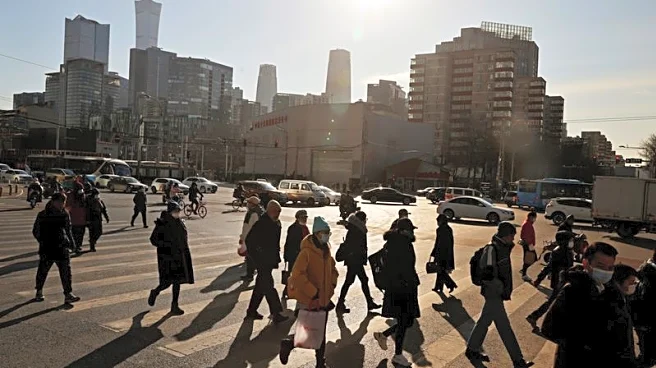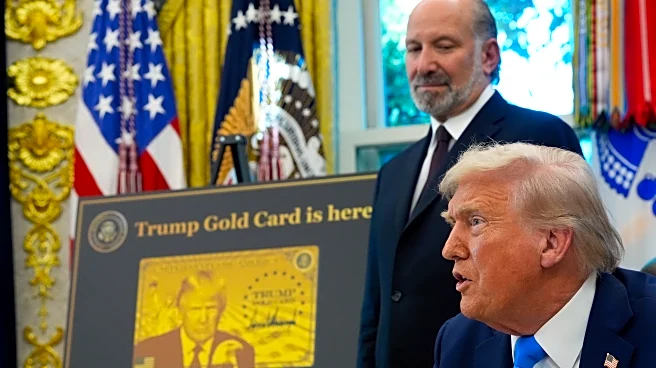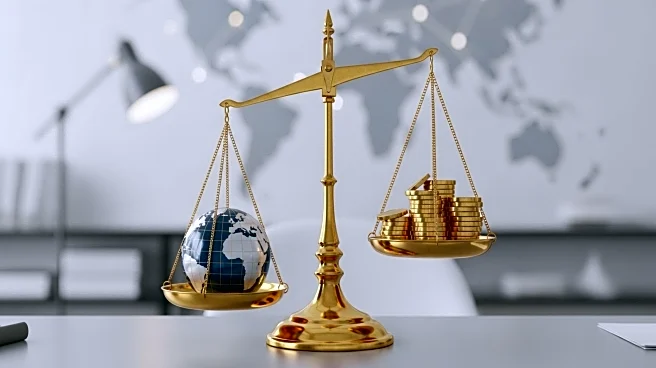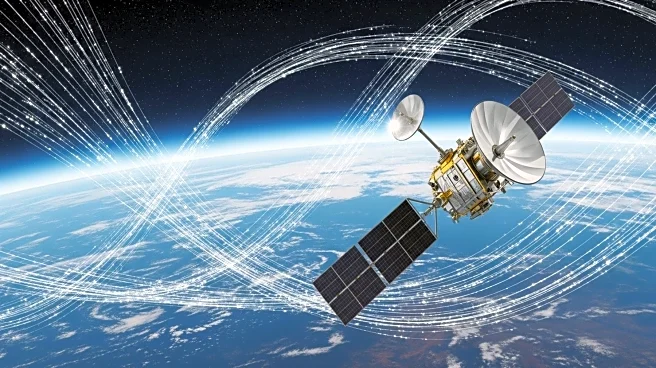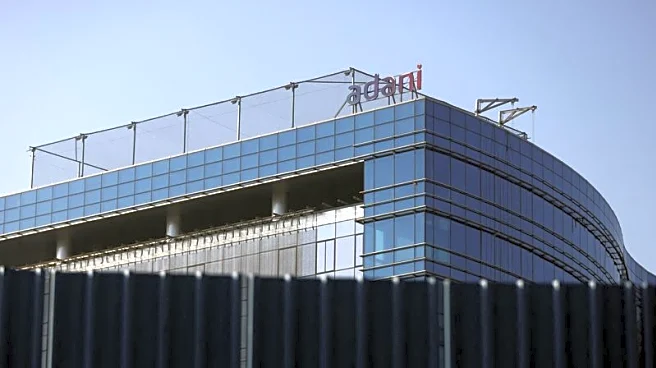What is the story about?
What's Happening?
Prime Minister Narendra Modi has announced significant cuts to India's Goods and Services Tax (GST), aiming to stimulate consumer spending during the festive season. The tax reductions include making staples like milk and bread tax-free and lowering consumption tax on small cars, televisions, and air conditioners from 28% to 18%. These changes are part of a broader overhaul of India's GST regime, intended to simplify the tax code and enhance household consumption, which constitutes over half of India's GDP. Companies such as Reliance, HUL, and Mahindra & Mahindra are expected to pass on these tax savings to consumers, potentially boosting demand. The government anticipates a revenue loss of approximately $5.4 billion this year due to these cuts, although independent experts predict the figure could be higher.
Why It's Important?
The GST tax cuts are crucial for revitalizing India's economy, particularly in the face of high tariffs imposed by the U.S. The timing of these cuts coincides with India's festive season, a period marked by increased consumer spending. By reducing the cost burden on consumers, the government hopes to mitigate the impact of international trade tensions and stimulate domestic economic activity. This move is expected to benefit various sectors, including automotive and consumer goods, by increasing sales and inquiries. However, the tax cuts also pose challenges for businesses, which must quickly adapt to new pricing structures and manage production amid uncertain demand.
What's Next?
As the GST reforms take effect, businesses will need to adjust their pricing and packaging strategies to reflect the new tax rates. Smaller brands and shopkeepers may face difficulties in implementing these changes due to limited resources and awareness. The government will likely monitor the economic impact of these reforms closely, assessing whether the anticipated boost in consumer spending materializes. Additionally, there may be further discussions on how to address the revenue shortfall resulting from the tax cuts.
AI Generated Content
Do you find this article useful?


